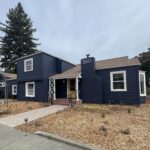Rolfing Sessions
Rolfing is classically  experienced as a ten-part series of 75 to 90 minute sessions, with each session scheduled approximately one to two weeks apart.
experienced as a ten-part series of 75 to 90 minute sessions, with each session scheduled approximately one to two weeks apart.
Depending on the needs and goals of an individual client, it is possible that fewer or greater than ten initial sessions may be appropriate. Using the Rolfing Principles of Intervention along with the clients own input, the Rolfing practitioner may develop strategies of intervention better suited to the unique needs of an individual than the classic ten series can provide.
Safely and comfortably, the Rolfing practitioner applies just the right amount of pressure where the fascia is restricted to evoke relief and body realignment. Clients may be asked to participate by focusing their attention on the area being worked, or by making slow, precise movements.
While Rolfing is concerned primarily with structural changes, any change in the physical body affects the whole person. Clients often report positive mental changes take place following Rolfing, which can include a change in their outlook on life and in their ability to handle emotional challenges.
Beyond the Basic Ten Series
After completing a basic series, many clients find it beneficial to receive additional sessions to support or continue their healing process. On average, two or three sessions a year are useful. The work can take the form of maintenance, first aid,
 further work on specific problem areas, or Movement Integration sessions. Rolfing Movement Integration can be explored either during or after the initial Rolfing series. Movement work focuses on developing balance and support for moving efficiently through the gravitational field.
further work on specific problem areas, or Movement Integration sessions. Rolfing Movement Integration can be explored either during or after the initial Rolfing series. Movement work focuses on developing balance and support for moving efficiently through the gravitational field.
This involves restoring and reclaiming an individuals felt sense of their body as well as releasing old movement patterns that no longer serve them. Taken together, Rolfing Structural and Movement Integration can be an important part of a lifetime process of nurturing well-being.





